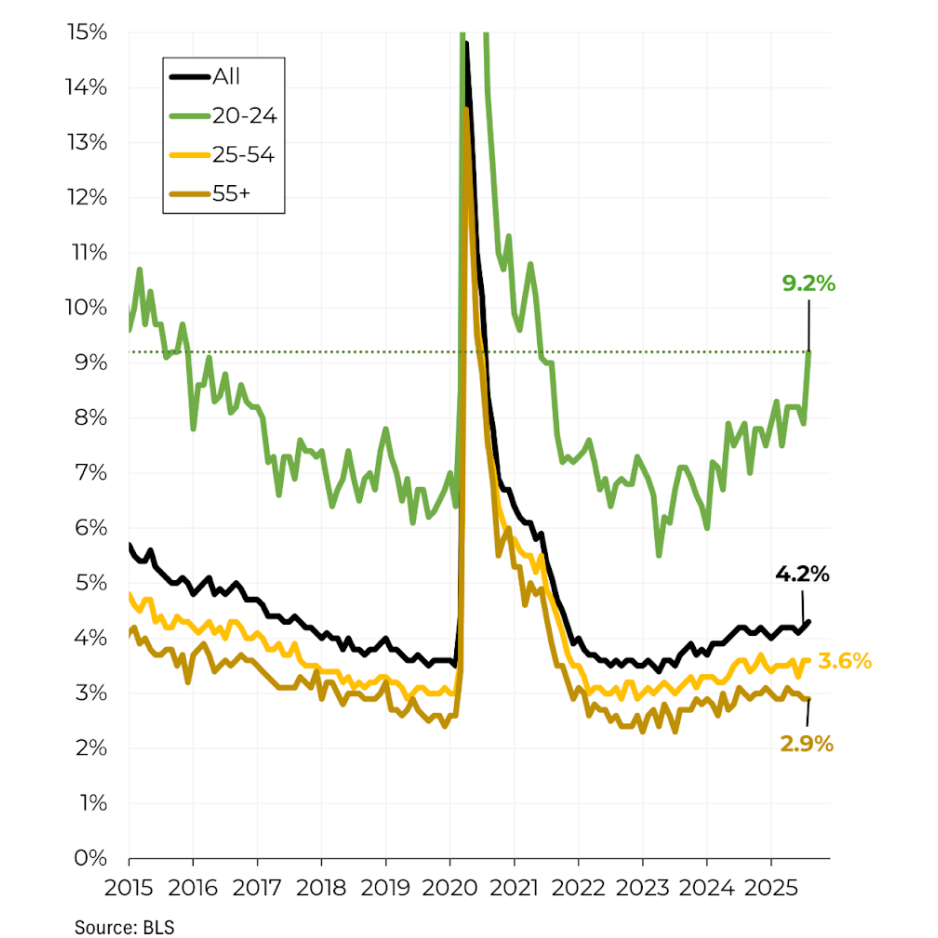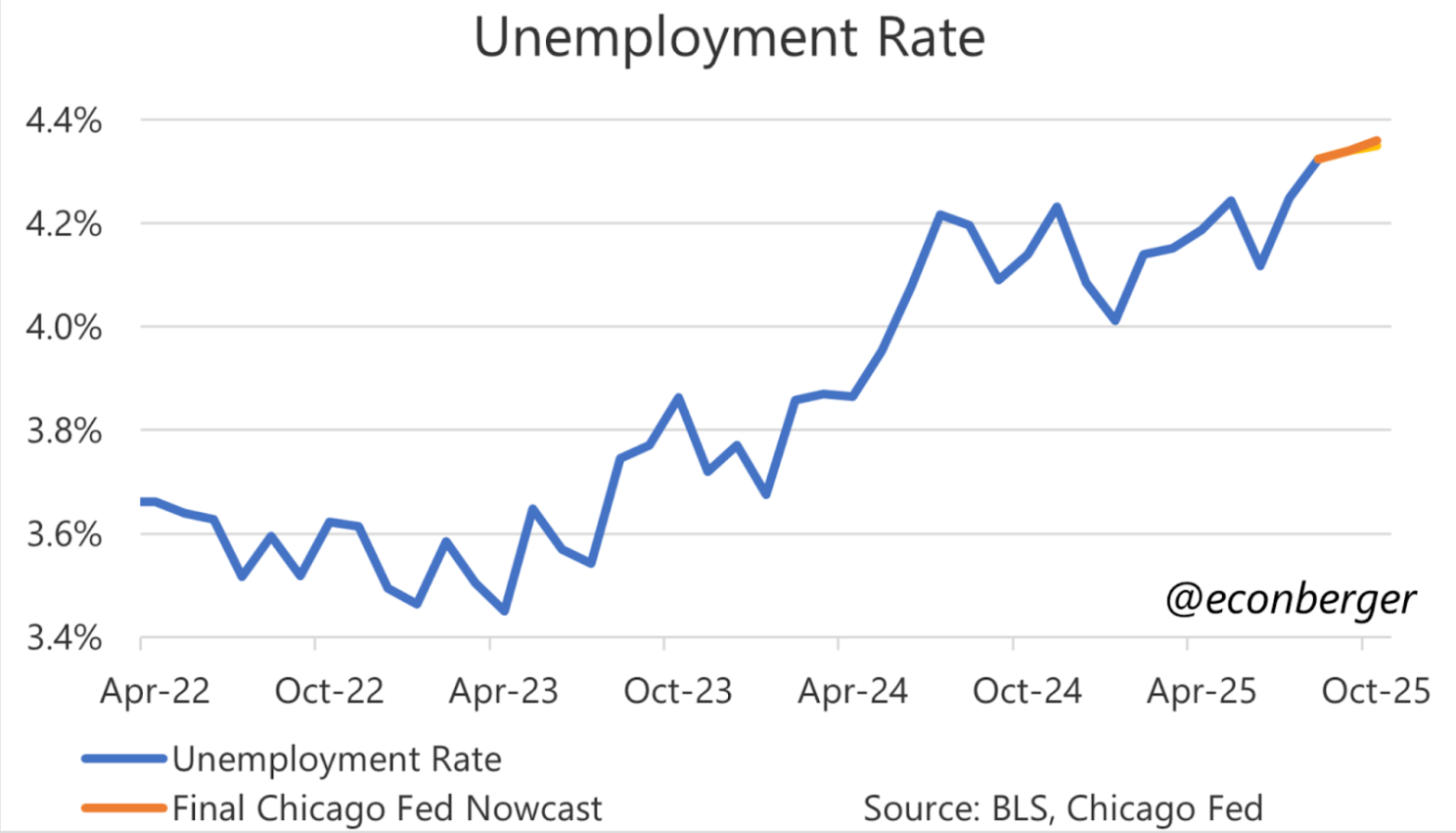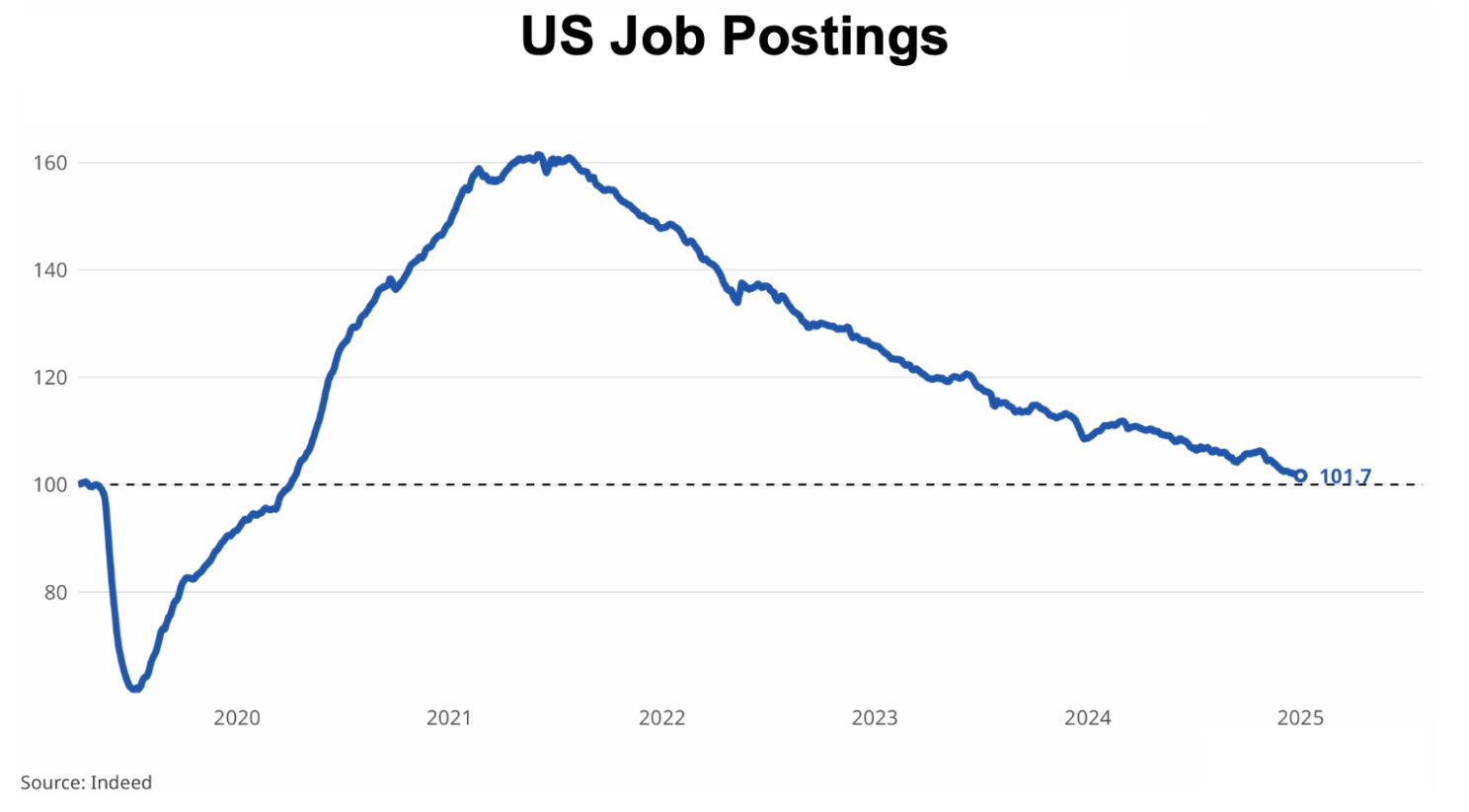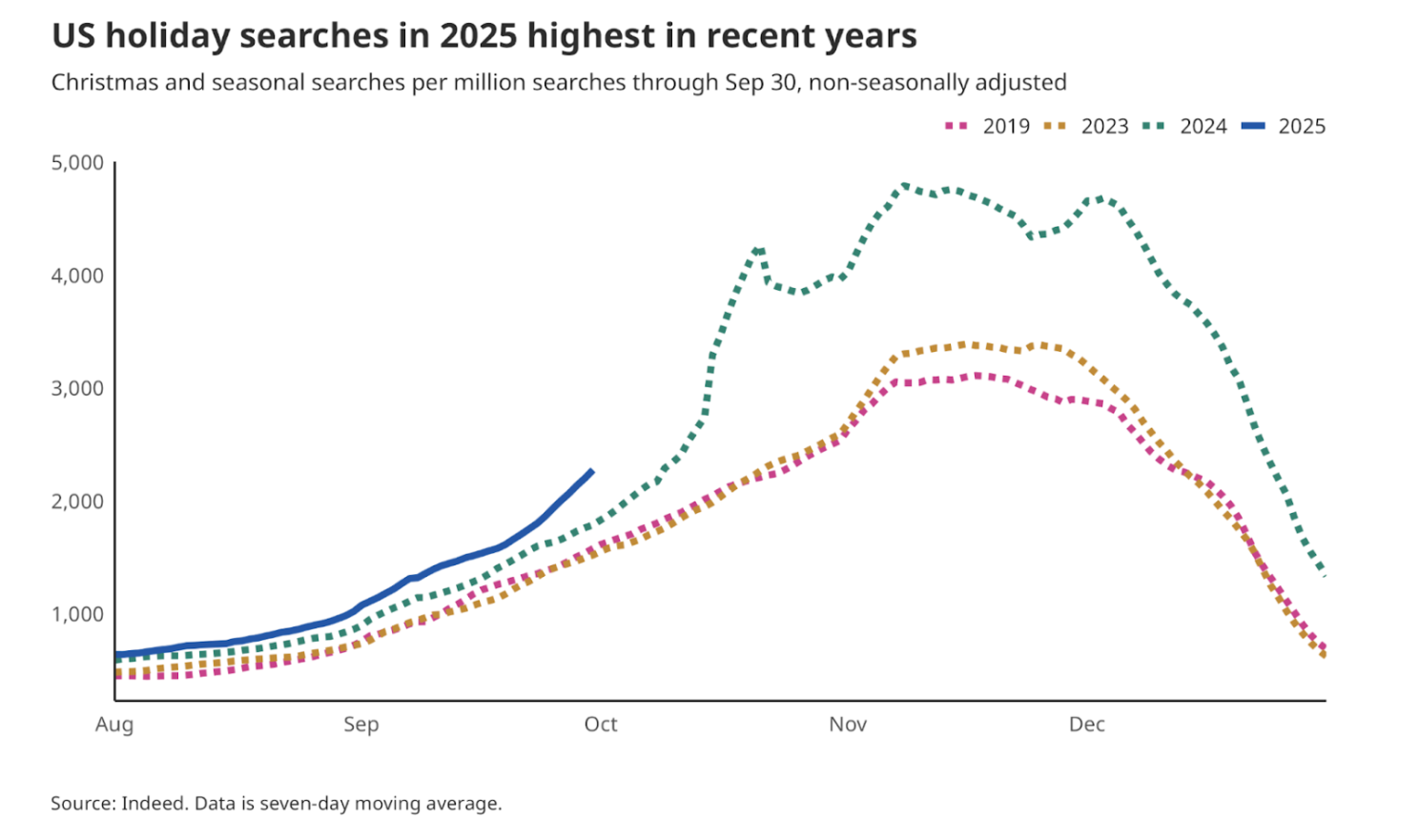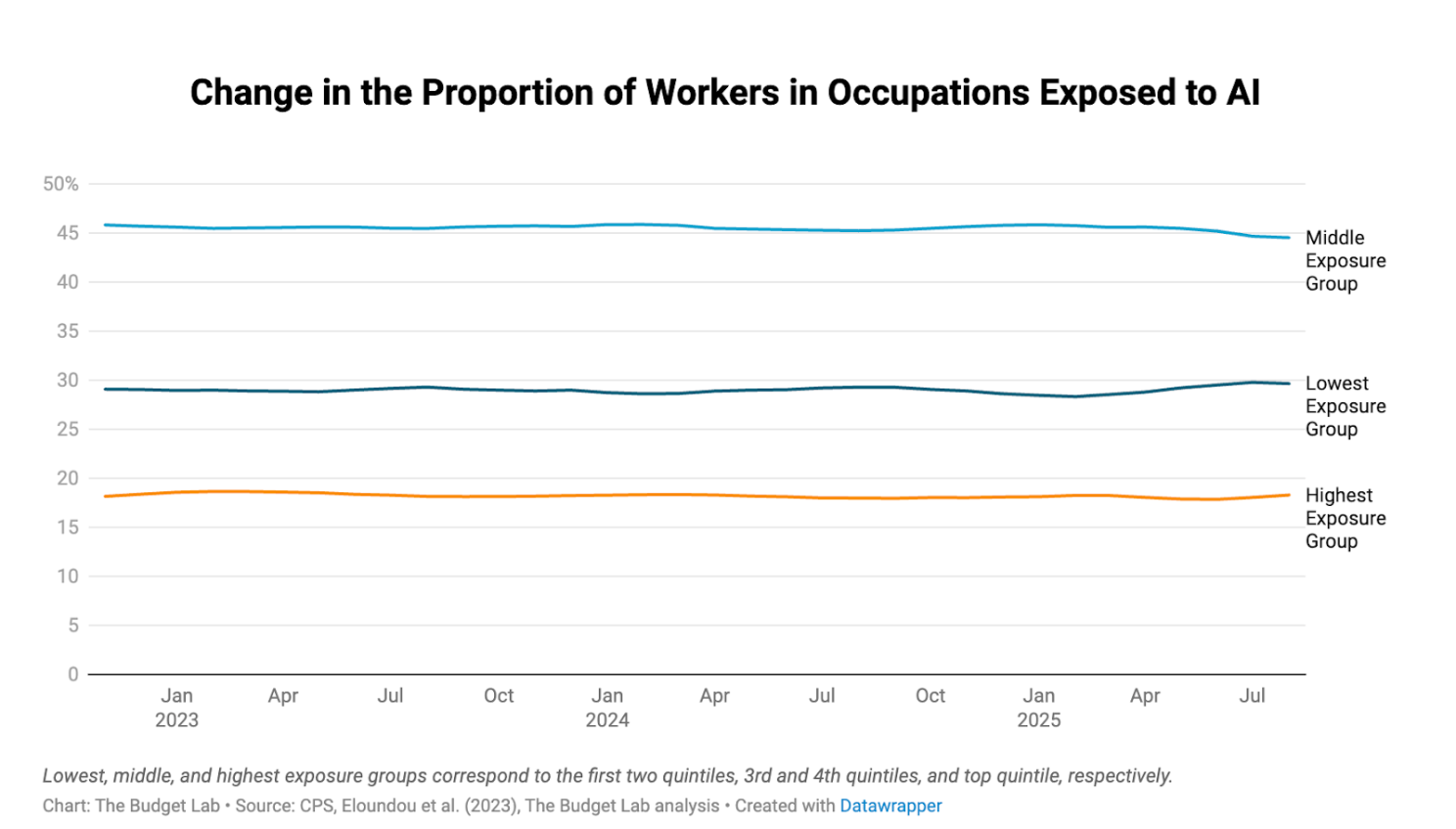The US labor market is a bit of a hot mess right now.
Companies cut more jobs in October than any other time since 2003.
Outplacement firm ‘Challenger, Gray & Christmas’ noted a 183% increase in job cuts since last month.
Even stable companies like Amazon, UPS, and Target are announcing mass layoffs.
And the reason for these cuts???
You guessed it… Artificial intelligence!!!
But wait, is that really true? I mean, that’s what the headlines are saying so…I should believe them right?
Well, before you believe anything, I would encourage you to do a little bit of research.
Keeping yourself informed about the labor market will help you dispel some of the common myths circulating online right now. It will also help you build credibility with your leadership team by providing them with facts and data (so they can share it with their boss).
I think the AI job loss narrative is not entirely true. And I’m going to show you why.
But what are some other narratives you should be aware of?
Let’s look at some charts, talk about the facts, and figure out how we can take advantage of these crazy times.
NARRATIVE 1: THE CORPORATE RANKS ARE FAT AND REDUNDANT
You’ve likely seen a lot of companies announcing “corporate” job cuts. And while the headlines would have you believe that AI is destroying middle management jobs, the real reason retailers like Target are laying off employees is because they have declining traffic, smaller check sizes, and reduced customer frequency.
Customers simply have less money to spend. So they’re shopping less.
When customers spend less, revenue goes down, and companies have fewer dollars to fund growth and pay employees.
So they lay people off and call them “redundant”.
They’re actually not redundant. The companies are just struggling to hit their numbers amidst declining consumer confidence.
And it’s no coincidence this all happens in Q3/Q4 when most CEOs and CFOs are trying to minimize costs so they can maximize shareholder value (and their bonuses) at the end of their fiscal year.
Okay, so AI isn’t eating corporate jobs yet, but can’t some of the other job destruction I’ve been reading about be contributed to AI?
Let’s take a look…
NARRATIVE 2: AI IS DESTROYING OPPORTUNITIES FOR NEW COLLEGE GRADS
When looking at unemployment charts, it’s easy to look at the top line unemployment rate and call it a day.
But, like any data, you can learn new insights by looking at subpopulations. It can show you WHO is being impacted the most.
When you do this, you quickly realize that the overall unemployment rate is around 4.3% for all workers BUT…people in the 20-24 year old cohort are clearly having a harder time.
Unemployment in this group has risen to 9.2% and it’s growing at a faster rate than all other age-related cohorts as shown by the green line below.
AI Job Destruction Has Started (7 Charts to Show Your Boss)
The news cycle would have you believe that AI is replacing entry level positions typically occupied by this age group. Or that college degrees are simply no longer relevant. Or that they’re lazy.
All of these narratives are just guesses.
WHAT WE DO KNOW is that some industries are struggling. And when companies struggle, one of the first things they do is stop hiring…on top of laying people off.
So, those entry level jobs they were posting a couple of years ago…they’re not posting them now. They’re in “wait and see” mode hoping that the market turns around.
Below I’ll show some additional charts that prove this. Companies ARE posting few jobs.
I think that’s why college grads have higher unemployment. Mid-career talent is staying put…but college grads are new to the job market so of course they’re going to have higher unemployment – they’re looking for their first job – alongside a thousand other applicants – because the jobs they want are not available right now.
NARRATIVE 3: THE LABOR MARKET IS STILL TIGHT!
I continue to hear this narrative from politicians, media outlets, and hiring managers. But the data just doesn’t support the narrative.
The unemployment rate overall is going up – while the number of available jobs is going down.
That is literally the opposite of a tight market.
Sure, overall there are more jobs than applicants in the United States. People who want to work, can. But when you look at the jobs that people really want, the competition is sky high.
Here’s a good chart to show the rising unemployment rate:
And you can clearly see on the chart below from Indeed’s Hiring Lab, that companies are posting fewer and fewer jobs over time.
If you’re in recruiting, this explains why all your reqs have a record number of applicants. Again, the opposite of a tight labor market.
NARRATIVE 4: HIRING WILL BE SLOWER THIS HOLIDAY DUE TO DECLINING SALES
In my job, I compete in the hourly/retail labor market. So I usually pay extra attention to holiday hiring numbers every year.
This year, the narrative has been one of more doom and gloom. The down economy will lead to lower hiring numbers. But the charts aren’t reflecting that yet.
What they are showing is a point I made earlier in this article – that competition for jobs is fierce. Below, you can see that the same number of jobs have been posted this year compared to prior years.
But this chart shows there are more applicants than ever. Maybe it’s those college grads who didn’t find work yet so they’re earning some cash while they wait for the job market to turn around.
It’s still early in the season so I’ll continue to track this one.
NARRATIVE 5: ARTIFICIAL INTELLIGENCE IS DESTROYING JOBS
I’ve made a few points above that hopefully put the real labor market into perspective. But I realize that I haven’t fully addressed the “AI is destroying our jobs narrative” yet. Part of that is because it’s not easy to prove.
I’ve heard a lot of anecdotal evidence that tech start ups need fewer developers and that robots in warehouses are eliminating the need for works, but it’s not really showing up in the hard data yet.
The “Budget Lab” at Yale University tried though! They just published a study on the impact of AI on jobs. They broke the labor market into 3 groups based on the amount of exposure jobs might have to AI – high, medium, and low. Then they looked at job cuts in those groups since 2023 – when Open AI launched ChatGPT.
The big reveal – not much has changed. Job destruction is not happening en masse yet.
Now, it’s true that some jobs WILL BE impacted by AI. And soon. But, it’s WAY too early for companies to be laying off thousands of employees as a result.
The leaders will be those who have always been focused on innovation and efficiency as a business model. Like Amazon.
In the last several weeks this happened…
Andy Jassey (CEO) said “We will need fewer people doing someof th ejobs that are being done today…this will reduce our total corporate workforce as we get efficiency gains from using AI.”
A leaked memo pointed to 600,000 jobs to be cut in the next decade.
They cut 30,000 employees last week
So, it’s coming folks. But as of right now, most people can’t even write a good prompt on ChatGPT yet.
SO WHAT IS THE CORRECT NARRATIVE?
To bring some closure here, I thought I’d end with one final chart and some thoughts that reinforce the point that – right now – AI is not creating mass job loss. At least not yet.
The main narrative is something that no one wants to talk about…
Consumers are spending less money (because they have less to spend),
Companies are earning less revenue,
CEOs are trying to stop the bleeding,
So they’re laying people off and hiring fewer workers overall.
One of my least favorite charts to drive this point home is below. You can see here that credit card, student loan, and car loan delinquencies are trending towards all time highs. This hurts my heart because it’s a signal that consumers are under financial pressure.
HOW CAN WE LEVERAGE THIS SOFT LABOR MARKET?
I don’t like the idea of “taking advantage” of a soft labor market but that’s my job. I work for a growing company so I’m in a position to help my company and help my fellow humans who might be looking to join a great company.
So, how do we as Talent Acquisition leaders take advantage of this opportunity? Here are just a few suggestions – if you have some more – please share!
The high applicant flow issue will not be resolved in the near term so focus on investing in tools that help you identify the best candidates at scale. This might include AI, automation, assessments, or screening tools.
Consider hiring new college grads instead of putting hiring on hold. Top students from top schools are on the market right now…they won’t be a year from now.
Consider dialing back your recruitment ad spend. Instead, focus on honing your EVP, dialing in your marketing messages, and getting better at targeting the right people.
Become aware of and consider people from industries that have been most impacted by the labor downturn. These might be industries you wouldn’t have considered in the past.
Continue playing with AI. It will be a couple of years before AI tools can double your overall productivity or replace your job. But you don't want to be a sitting duck.
Each month, my team shares charts and insights like these with our executive team to keep them informed of what’s true and false in the labor market. Failing to do this allows your leaders to form opinions that might be based on headlines or hearsay. I’ve always believed that controlling a factual narrative is the best way to build trust and credibility.
Hope this market turns around soon so people can get back to work. In the meantime, I’ll be looking for opportunities to bring great talent to our 800+ stores. If you’re looking, check out our opportunities at jobs.sheetz.com
// Supporting Resources
Use the following resources to go deeper on the topic of smart tech adoption in an age of rapid innovation.
Books to Read..
The Technology Trap: Capital, Labor, and Power in the Age of Automation by Carl Benedikt Frey: This book offers a deep historical and economic analysis of how automation impacts jobs, wages, and inequality, drawing parallels from the Industrial Revolution to the current AI revolution. It argues that the benefits of new technologies initially accrue to capital owners, leading to a "technology trap" for labor, which directly supports the article's point about corporate self-interest (maximizing shareholder value) over labor protection. Link Here
Rise of the Robots: Technology and the Threat of a Jobless Future by Martin Ford: This is a key work arguing the job displacement side of the AI debate. Ford makes the case that AI and automation will soon be capable of replacing a wide spectrum of human jobs—including many white-collar roles—leading to mass unemployment. Reading this provides the necessary contrast to the source article's more skeptical, data-driven perspective on current job loss, but validates its warning about the future impact of AI. Link Here
Prediction Machines: The Simple Economics of Artificial Intelligence by Ajay Agrawal, Joshua Gans, and Avi Goldfarb: This book reframes AI not as a replacement for labor, but as a technology that cheapens prediction. This economic lens helps explain how firms will integrate AI to automate specific tasks and augment human judgment.
Podcasts to Ponder..
#161 – Michael Webb on whether AI will soon cause job loss, lower incomes, and higher inequality — or the opposite: An interview with DeepMind economist Michael Webb that explores the nuance of AI's impact on the labor market, directly challenging the "AI job apocalypse" narrative. It analyzes which jobs are truly exposed to AI versus those affected by broader economic forces, and draws parallels with the adoption speed of previous disruptive technologies. Listen Here
Ep 538: 50% Jobs Gone due to AI? Anthropic CEO’s Explosive AI Job Warning by Everyday AI Podcast: This episode critically examines headlines and high-profile warnings about AI job destruction (like the 50% loss for white-collar roles). It helps listeners decipher whether such statements are based on data or are influenced by media hype and company self-promotion, aligning with the article's call to dispel common myths. Listen Here
The Impact of AI on Labor with Harry Holzer: Featuring an economist and former Chief Economist at the U.S. Department of Labor, this discussion provides fundamentals of the labor market and the current versus future impact of AI automation. It includes expert commentary on why better data is needed to accurately measure AI's effect, supporting the article's data-focused approach. Listen Here
Articles to Skim..
Evaluating the Impact of AI on the Labor Market: Current State of Affairs: This article suggest that while the occupational mix is changing slightly faster in some high-exposure sectors (like Information), these shifts are not markedly different from past technological changes (like the internet) and largely predate the widespread introduction of generative AI. The findings temper widespread fears that AI automation is rapidly eliminating cognitive jobs across the economy. Read Here
Are Entry-Level Jobs Going Away? The Hidden Workforce Shift: The article argues that entry-level jobs are not disappearing, but are "evolving" into roles with higher experience requirements due to automation and Artificial Intelligence (AI). Many of the repetitive tasks traditionally handled by new employees (like data organization and basic research) are now being assigned to AI agents or automated systems. Read Here
How artificial intelligence impacts the US labor market: The study found that while some highly exposed roles saw a drop in employment, this was often offset by overall growth at companies that adopted AI due to increased productivity and sales. The key takeaway for business leaders is to focus on augmenting human workers and leveraging AI to boost growth, rather than viewing it purely as a substitute for labor. Read Here
Videos to Watch..
3 myths about the future of work (and why they're not true) by Daniel Susskind: Susskind argues against the idea that automation will simply free us for more leisure or that only low-skill jobs are vulnerable, providing a nuanced view of how machines can complement and substitute human labor, forcing a re-evaluation of what makes human skills unique. Watch Here
The jobs we'll lose to machines — and the ones we won't by Anthony Goldbloom: The speaker discusses how machine learning is not just replacing manual jobs but also cognitive ones. Crucially, the talk highlights the skills that AI still struggles with, such as social intelligence, complex negotiation, and non-routine creative problem-solving. This supports the article's point about not being a "sitting duck" and the need to focus on human-centric skills that AI augments but doesn't replace. Watch Here
